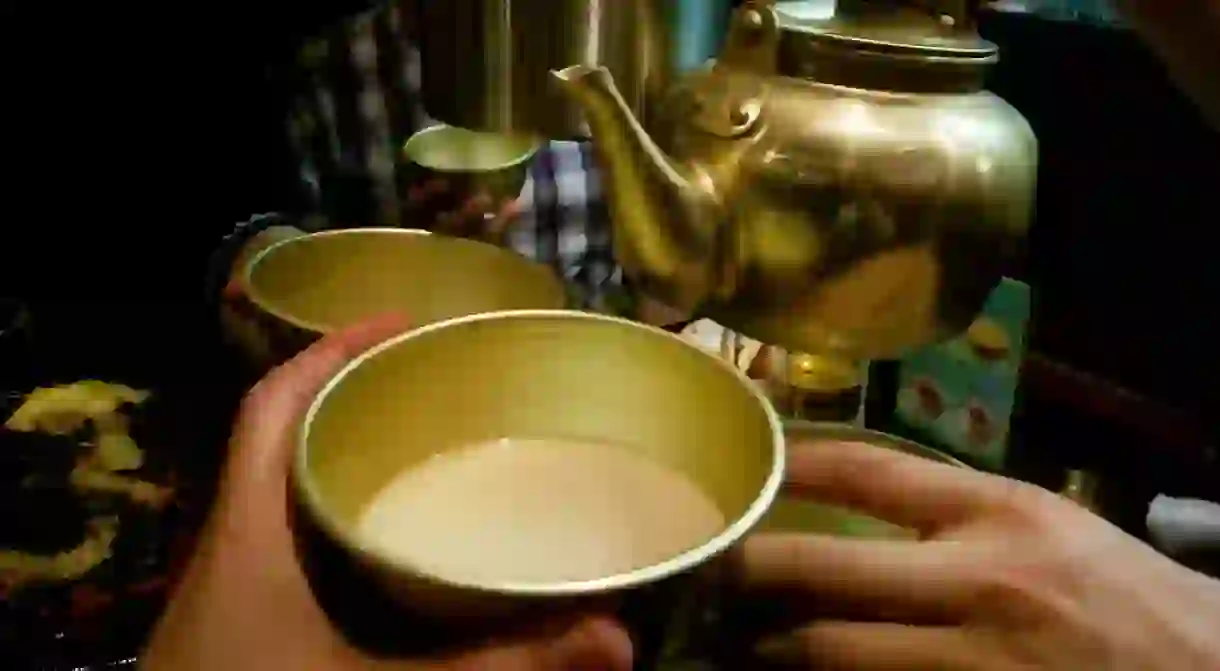A Brief History of Korean Makgeolli

Cloudy and milky sweet with a touch of tangy fizz, makgeolli is a perfect counterpart to flavourful Korean fare. At 6–7% strength, it is weaker and more quaffable than the better-known soju, and up until 1988, it was the country’s most popular alcohol. Yet, before its resurgence in the 2010s, this yeast-fermented rice wine was largely unknown outside Korea. Why was Korea’s oldest alcoholic drink so overlooked? The answer lies in its history.
The history of makgeolli
The history of makgeolli goes back some 2,000 years. The first documented mention of it can be found in a book from the Goryeo Dynasty (918-1392), titled Jewangun-gi (The Poetic Records of Emperors and Kings), where it is referred to during the reign of King Dongmyeong. During this time, it was called ihwa-ju (pear blossom alcohol), as the drink was made at the specific time of year when this tree bloomed.
Analogous to European low-alcohol beer, makgeolli was the drink of farmers, peasants and the working classes — so much so that it was also known by another name, nonju (“farmer’s liquor”). This has historically meant that makgeolli and soju have been symbolic of a divide between social classes.
How is makgeolli made?
Makgeolli, like soju, uses three simple ingredients — rice, water and the traditional fermenting agent nuruk. Nuruk is a dry cake comprised of bacteria, wild yeasts and koji mould spores. Added to cooked sweet rice and water, this is left for around a week, and the nuruk acts to break down starch in the rice into sugar and then alcohol, producing a strong (15–19% ABV), sweet mixture called wonju. This is allowed to settle, and the top clear liquid separated. The resultant alcohol is cheonju, which was the drink of the Yangban (Korean aristocracy), and which can be distilled to make soju (as the eagle-eyed may have spotted, -ju in Korean means “alcohol”). The remaining settled sediment, also known as takju, is diluted with water, and roughly strained (but not filtered), to make makgeolli.

Makgeolli in Korean traditions
As Confucian culture developed, so did the need for families to brew their own alcohol, as it was used as an essential part of ancestral memorial rites. Makgeolli is still used for this purpose by Korean families today. This hyper-localisation was a boost for regional diversity, but became worrying to government in the later part of the Joseon Dynasty. A Liquor Tax Act in 1909 and Grain Management Act of 1964 were government measures against unlicensed brewing and agricultural shortage, and together put a stop to rice-based brewing.
Makgeolli in Busan
Busan makgeolli has a distinct flavour, attributed to the region’s pure water and the unique makeup of its wild yeasts. Makgeolli lovers should pay a visit to Geumjeongsanseong Fortress Makgeolli, located on Busan’s Mount Geumjeong; a long-standing makgeolli brewer, this area has seen makgeolli production for 500 years. Geumjeongsanseong Makgeolli uses a traditional method of brewing called foot-striking, where yeast is wrapped in hemp cloth and (as in wine production) trodden on by barefooted brewers. Visitors can learn the secrets of makgeolli making through hands-on programmes both at Geumjeongsanseong Fortress and Yeonoyojae, a makgeolli school in Munhyeon-dong.

How to drink makgeolli
There are two ways to drink makgeolli. The traditional way is to pair it with hearty foods such as anju (bar food), pajeon (green onion pancake) or bindaetteok (mung-bean pancake). Busan makgeolli pairs well with seasoned bulgogi (barbecued beef). Whatever you drink it with, it should be sipped from rustic tukbaegi (a small earthen bowl) and poured from a clay container. As it contains sediment, the makgeolli should be either shaken or stirred before pouring. Whilst unpasteurised makgeolli can be matured in the bottle to produce complex flavours, it’s more often served fresh.
The second way is to visit one of the trendy makgeolli bars which have sprung up in recent years. Try Yong Ggum (which translates to “dragon dream”, but is also known as the Cave Bar due to its location in an ex-bomb shelter) or wander through Nampo or Seomeyon to find your own hip hangout. Drink your makgeolli straight, or mix with Sprite.
Yong Ggum, 13-13 Beomil 1-dong , Busan, South Korea, +82 051 646 5924













